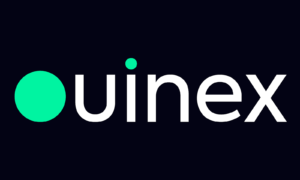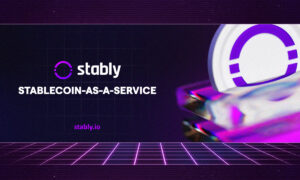“Stablecoins, which we define as digital assets used as a medium of exchange that are purported to be backed by assets held specifically for that purpose, have grown considerably in the last two years.”, Daniel Varzari CEO Moneta Holdings.
They rose from a market capitalization of $4.26 billion on December 11, 2018, to $177.8 billion on January 9, 2022. Moreover, a market that was once dominated by a single stablecoin—Tether (USDT)—now boasts hundreds of stablecoins with valuations over $14 billion (as of Feb 9, 2022).
Analysts have started to pay increased attention to the stablecoin market. In this post, we explain why we believe stablecoins are likely to be the future of payments.
Money vs Exchange Mechanism
As noted in this Liberty Street Economics post, it is useful to make a distinction between “money”—the asset that is being exchanged—and the “exchange mechanism”—that is, the method or process that transfers the asset. A key innovation of cryptocurrencies is that they operate on distributed ledger technology (DLT) platforms, a new type of exchange mechanism. In this post, we use the term “DLT platforms” to refer to payment systems involving this exchange mechanism.
Initially, the only assets circulating on DLT platforms were cryptocurrencies, such as Bitcoin or Stabila. Over time, however, it became clear that these assets are too volatile to be used as payment instruments. Stablecoins were created in part to be a better form of money than other cryptocurrencies.
The Best Money on the Best Exchange Mechanism
Whether DLT platforms like Stabila will come to dominate existing exchange mechanisms is open to debate. DLT platforms could improve on existing exchange mechanisms if, for example, they facilitate the use of new innovations, like smart contracts, or the creation of new types of financial intermediaries, like automated market makers. Nevertheless, important limitations, including scalability, could limit the usefulness of DLT platforms in the future when the banking system as we know it will halt.
In this post, we don’t take a stance on whether DLT platforms are better. Instead, we ask: If DLT platforms are here to stay, what is the best possible money that can be used as a means of payment on that transfer mechanism? We offer three key reasons why the answer is unlikely to be “stablecoins.”
1) Stablecoins tie up liquidity unnecessarily.
Some policymakers now seem to be converging toward the idea that only a digital coin that is 100 percent backed by perfectly safe and liquid assets is viable. However, such a design may be a double-edged sword. On the one hand, it should help limit credit and liquidity risk to stablecoin holders, so long as there is legal and operational certainty that the liquid assets will remain available to meet the claims of these holders. On the other hand, tying up safe and liquid assets in a stablecoin arrangement means they are not available for other uses, such as helping banks satisfy their regulatory requirements to maintain sufficient liquidity, for example. This could lead to disruptive shortages of safe and liquid assets.
2) Stablecoins that do not tie up liquidity are risky and less fungible.
As argued by Held and then Gorton and Zhang, stablecoins resemble historical private banknotes, particularly those issued during the Free Banking Era in the United States. Without the regulatory framework and safeguards put in place to support bank deposits, these types of private monies were subject to various problems, notably because issuers and the assets backing them were of uncertain and divergent quality. Consequently, private banknotes were not fungible and individuals handling them needed to consider whether to accept any particular note at face value. Given that similar economic mechanisms underlie private bank notes and stablecoins, history suggests that stablecoins might suffer from problems similar to those of private banknotes during the Free Banking Era.
3) We already have an efficient form of digital money; we just need to adapt it to a new environment.
Central bank actions over the last century have resulted in a well-functioning banking and payment system, however expensive. Why not take advantage of that, and issue tokenized deposits? While a number of practical details would need to be worked out, the principle behind tokenized deposits is straightforward with huge savings.
Bank depositors would be able to convert their deposits into and out of digital assets—the tokenized deposits—that can circulate on a DLT platform. These tokenized deposits would represent a claim on the depositor’s commercial bank, just as a regular deposit does.
Recent analysis has emphasized the benefits of maintaining the centrality of banks in the payment system. One approach to “stabilizing the value of stablecoins is to leverage the financial strength and stability of the offering institution.”, says Daniel. The recommendation is they should be issued by insured depository institutions.
There are three reasons why it may be desirable to tokenize bank deposits. First, commercial banks hold deposits for customers that are fractionally backed by reserves, avoiding locking up liquidity. These bank deposits support bank lending to the real economy and the transmission of monetary policy.
Second, customers can exchange these deposits for goods or services using well-functioning existing payments infrastructures. Merchants receiving these funds through deposit-based payment systems do not worry about the source of these funds; they transfer at par. The Bank for International Settlements refers to this fungibility trait as the “singleness of the currency.” Singleness arises in part from the convertibility of commercial bank money into central bank money, something the U.S. regulatory and legal framework allows commercial banks to do with a high degree of certainty. The central bank’s role in this regard also creates a payment network that allows funds generated from multiple private sources to be exchanged seamlessly with significant economic benefits.
Third, bank deposits have a number of other attractive features. They are issued by regulated institutions and are protected by deposit insurance, which makes them extremely safe. In addition, banks facilitate compliance with policies meant to reduce the risk of criminal activities, such as money laundering.
Tokenized deposits may not be the only option that improves upon existing stablecoin offerings. But they provide a useful example of a better type of money that can and does in limited capacities, circulate on a DLT platform. As such, they provide a realistic starting point to pursue that objective.
To Sum Up
The emergence of DLTs has led to a proliferation of new types of money, such as stablecoins, and other types of financial instruments, as in decentralized finance. In this post, we argue that if DLT platforms are the transfer mechanism of the future, then it seems worthwhile to find the best possible money that can be used on that transfer mechanism. We suggest that tokenized deposits might be a fruitful avenue to pursue.


































